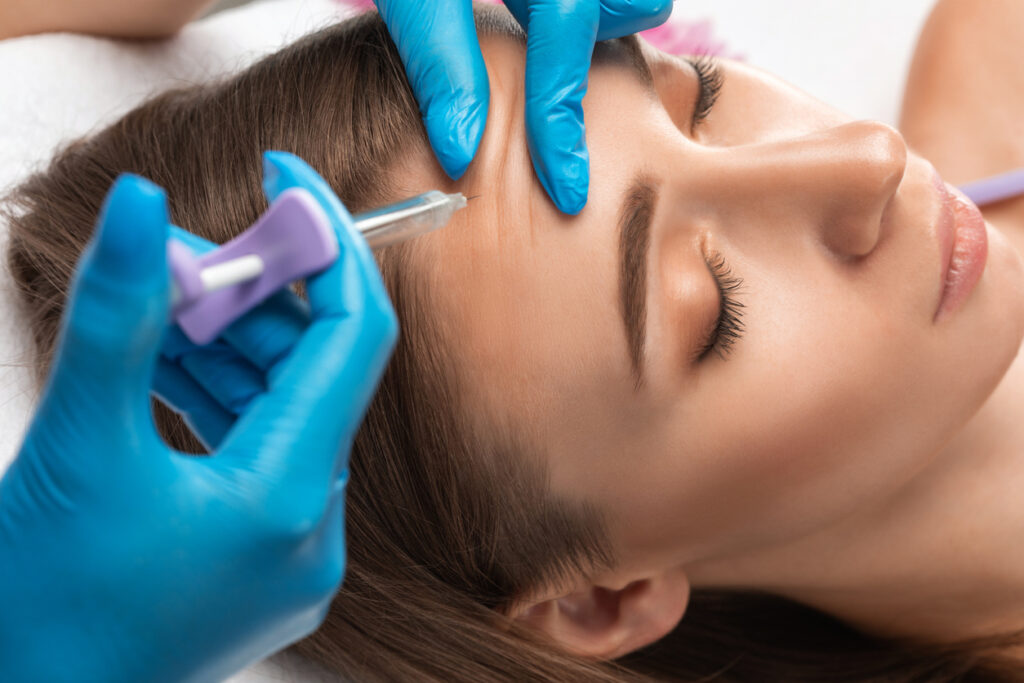What Are the Most Common Areas Treated with Botox?
Botox, a versatile treatment, is widely known for its ability to reduce wrinkles and fine lines. Beyond its cosmetic uses, Botox also addresses medical concerns. Here’s an overview of the most commonly treated areas. This Article delves into the details of Botox in Dubai.
Forehead Lines
Forehead wrinkles are horizontal lines that form due to repeated raising of the eyebrows. Botox relaxes the frontalis muscle, reducing the appearance of these lines and preventing new ones.
Frown Lines (Glabellar Lines)
Also called "11 lines," these vertical wrinkles between the eyebrows develop from frowning or squinting. Botox smooths this area by relaxing the muscles, giving a more relaxed expression.

Crow’s Feet
These fine lines at the outer corners of the eyes are caused by smiling, squinting, or sun exposure. Botox reduces their appearance, offering a refreshed look.
Bunny Lines
Bunny lines are wrinkles that appear on the sides of the nose when scrunching. Botox relaxes the nasalis muscle to smooth these lines.
Lip Lines and Lip Flip
- Vertical lip lines: Botox softens smoker's lines or fine wrinkles around the mouth.
- Lip flip: Enhances the upper lip’s appearance by flipping it outward, creating a fuller look.
Chin (Mentalis Muscle)
A bumpy or "orange peel" chin texture can be smoothed with Botox, relaxing the chin muscles for a more even appearance.
Jawline and Masseter (Jaw Slimming)
Botox in the masseter muscles:
- Contours the jawline, creating a slimmer facial profile.
- Relieves teeth grinding (bruxism) by reducing tension in these muscles.
Neck Bands (Platysmal Bands)
Vertical bands in the neck from platysma muscle activity can be treated with Botox to create a smoother neck appearance.
Gummy Smile
Botox corrects excessive gum visibility by limiting upper lip movement, resulting in a balanced, natural smile.
Eyebrows (Brow Lift)
A non-surgical Botox brow lift raises the eyebrows slightly, opening up the eyes and offering a more youthful look.
Underarms (Hyperhidrosis)
Botox reduces excessive sweating by blocking nerve signals to the sweat glands, offering relief for individuals with hyperhidrosis.
Migraines (Head and Neck)
Botox is FDA-approved to prevent chronic migraines. It’s injected into specific areas of the forehead, temples, neck, and shoulders to reduce headache frequency.
Under-Eyes
Botox softens wrinkles and crepey skin under the eyes, brightening the area for a refreshed appearance.
Décolletage (Chest)
Wrinkles and fine lines on the chest can be treated with Botox to rejuvenate the décolletage area.
Hands and Feet (Hyperhidrosis)
Botox minimizes excessive sweating in the palms and soles, providing comfort for those with severe sweating.
Scalp
Botox can be used on the scalp to reduce sweating, helping to maintain hairstyles for longer periods.
Conclusion
Botox is a highly adaptable treatment that addresses both cosmetic and medical issues. Consulting with a qualified professional ensures personalized treatments and safe, effective results tailored to your needs.